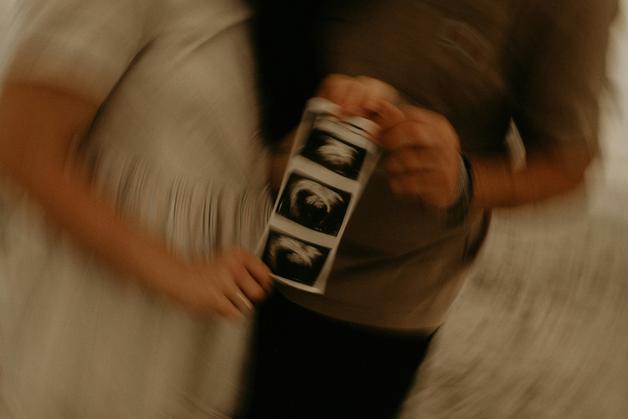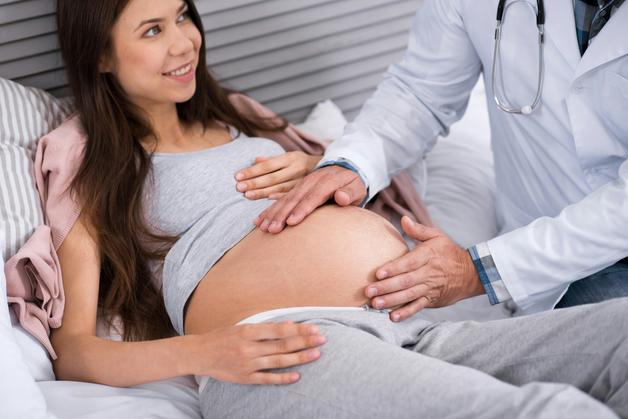You are watching for hints, a flutter of change, a body that suddenly feels different. Are these the early signs of pregnancy or just a quirky cycle and stress talking. Here is the short version, listen to your body, track what you can, and verify with a test when timing makes sense. Many parents feel torn between hope and doubt. You can move step by step. Notice cues, decide when to test, and know what deserves urgent care. Expect clarity on symptoms and timing, what tests do and do not show, how to read light bleeding, and when to call a clinician. Evidence anchors the advice here, with pragmatic tips and calm reassurance throughout.
You will see the phrase early signs of pregnancy repeated with purpose, since your search intent is likely clear and your next actions depend on it.
What early signs of pregnancy mean
Plain language definition
The body begins to shift once an embryo implants and hormones rise, and those shifts create early signs of pregnancy that many people notice. The list is familiar, a missed period, light implantation bleeding, breast tenderness, fatigue, queasy stomach, heightened sense of smell, mild cramping, and more trips to the bathroom. Helpful, yes, but not definitive, since stress or illness can mimic them. A test confirms, not symptoms alone (NHS, Mayo Clinic, ACOG).
Immediate next steps for parents
- If your period is only a day late, you can wait a few days, then test to reduce the chance of a false negative result. If you tested early and still suspect pregnancy, repeat in 3 to 7 days or ask for a serum beta-hCG test that shows exact hormone levels over time (NHS).
- Use a home pregnancy test after a missed period for routine checks. If you need earlier or more precise detection, for example after IVF or a trigger shot, request a laboratory blood test for quantitative hCG with serial repeats to confirm a rising pattern (Mayo Clinic, ACOG).
- Ground yourself with one clear detail, mark ovulation or testing day, share feelings with a trusted person, and limit doom scrolling. If anxiety feels overwhelming, a clinician or counselor can help.
Micro example, DPO 8 light spotting, DPO 14 missed period, positive home test, then a call to your clinician.
How pregnancy begins, biology and timing
From fertilization to implantation
After ovulation, sperm can meet the egg in the fallopian tube. If fertilized, the embryo drifts toward the uterus for several days, then attaches and burrows into the uterine lining. That attachment is called implantation and it usually occurs 6 to 12 days past ovulation, most often around 8 to 10, which is why early signs of pregnancy tend to show up only after this event starts hormone production (NHS).
Hormones that drive early signs
- The placenta begins to produce human chorionic gonadotropin, abbreviated hCG, soon after implantation. Tests detect this hormone, so there is a natural lag between conception and a positive result.
- Rising progesterone supports the uterine lining and calms the uterus. It often explains early fatigue and breast changes since it has a sedating effect and shifts fluid balance.
- Growing estrogen increases blood flow and tissue growth in the uterus and breasts. It also contributes to queasiness, nasal stuffiness, and the tint of visible veins.
Together, these hormones create the early signs of pregnancy that many parents track carefully, although timing and intensity vary widely.
Core symptoms you may notice
Missed or late period
- Why it matters, a missed period is the most common nudge to test because hCG and progesterone usually suppress the next bleed.
- Caveats, cycle length varies, especially with recent contraception changes, stress, illness, or weight shifts. If your cycles are irregular, track days past ovulation as a more reliable anchor than calendar dates.
- What to do, consider a test on the day your period is due or a few days later. If you need earlier confirmation, a clinician can order blood testing for hCG levels (Mayo Clinic, NHS).
Implantation spotting or light bleeding
- Timing, commonly 6 to 12 DPO, often 8 to 10.
- Appearance, often pink or brown flecks, lighter than a period, and short lived, a few hours to one or two days.
- Prevalence, reported rates vary across studies, often cited around 10 to 20 percent, with wider ranges in older reports. Exact frequency is uncertain, which is why you can treat it as a clue, not proof (NHS, obstetric literature).
- Practical note, brief and light points toward implantation. Heavier flow or clots suggest a period or another cause, and a clinician review can help.
Breast changes and nipple sensitivity
Expect fullness, tenderness, darker areolae, and more visible veins. These shifts often appear within one to three weeks after conception as progesterone and estrogen rise. For comfort, try supportive bras, cool or warm compresses, and clinician guided pain relief. Many parents recognize this pattern as different from typical premenstrual tenderness because it lingers after the expected period date.
Fatigue and sleepiness
High progesterone and increased metabolic demand can bring on heavy eyelids early, sometimes before queasiness. Short naps help, along with pacing your day and focusing on iron rich foods and hydration. If exhaustion is profound, ask your clinician about iron testing and thyroid screening since both can contribute to fatigue in early pregnancy and otherwise (ACOG, Mayo Clinic).
Nausea, food aversions, cravings and smell sensitivity
- Onset and prevalence, many feel queasy at 4 to 6 weeks of gestation, though some notice it earlier. About 70 to 85 percent report morning sickness, while vomiting is less common at about 40 to 60 percent. These are population estimates and experiences vary (Mayo Clinic, ACOG).
- Triggers and patterns, stronger smells, certain foods, and low blood sugar can worsen symptoms. Sudden aversions or odd cravings are common.
- What might help, small frequent meals, bland crackers by the bed, safe use of ginger or vitamin B6 after clinician approval, and consistent hydration. Severe or persistent vomiting deserves clinical care.
Cramping and pelvic discomfort
Implantation cramps are usually mild and short, often around the implantation window. Menstrual cramps are usually stronger and longer and may include heavier bleeding. Red flags include severe one sided pain, fainting, heavy bleeding, high fever, or shoulder tip pain, any of which needs urgent care due to concern for ectopic pregnancy or other emergencies.
Frequent urination and pelvic pressure
More trips to the bathroom can result from increased pelvic blood flow and early rise in blood volume. Hydrate as usual, and consider reducing fluids near bedtime if you are waking often, unless your clinician advises otherwise. Urinary frequency without burning or fever is more likely hormonal. Burning, fever, back pain, or blood suggests a urinary tract infection that needs testing.
Basal body temperature patterns and implantation dip
A sustained rise in basal body temperature after ovulation can support the possibility of pregnancy because progesterone raises temperature. A single day dip, called an implantation dip by some communities, is not reliable on its own. If you chart, look for overall elevation past the expected menses date and combine with tests for clarity.
Cervical mucus and vaginal discharge changes
Thin white or creamy discharge is typical in early pregnancy, a normal physiologic discharge called leukorrhea. Green or yellow discharge, foul odor, or intense itching suggest infection and deserve clinical assessment.
Mood changes and emotional sensitivity
You might feel unusually tender, irritable, or instinctively aware of change. Consider a short walk, gentle breathing, or a call to someone you trust. Intuition can prompt a test, but only a test confirms pregnancy.
Less common signs
Metallic taste, constipation, headaches, dizziness, nasal congestion, and backache appear in some early pregnancy cohorts. These are nonspecific and can result from many causes, so supportive care is appropriate while you plan testing or follow up.
Micro example, you wake early with waves of queasiness and a faint metallic taste, you record DPO 11, you wait until DPO 14, then your test reads positive, and you schedule a call.
Timeline by dpo and gestational week
DPO breakdown
- 0 to 5 DPO, fertilization and embryo travel, usually no reliable symptoms.
- 6 to 10 DPO, possible implantation signs such as light spotting and mild cramps.
- 8 to 14 DPO, rising hCG in some pregnancies, early serum tests may detect in a minority.
- Around 14 DPO, expected missed period in a 28 day cycle, most urine tests give reliable results at this point, which is why many focus testing here for early signs of pregnancy confirmation (NHS, Mayo Clinic).
Week based expectations
- Weeks 3 to 6, counted from the last menstrual period, fatigue, breast tenderness, mild nausea, smell sensitivity, and brief spotting may appear. Some have no symptoms yet. Both patterns are normal.
- Beyond the missed period, early signs of pregnancy often intensify, which can reassure you that hormones are rising, although testing remains the only way to be certain.
Micro example, you chart ovulation, note DPO 9 light spotting, then test on DPO 14 with a faint line and repeat 48 hours later to see a stronger line.
Testing and confirmationHhcg basics and detectability
High sensitivity laboratory assays can sometimes detect hCG in blood around 7 to 12 DPO. Home tests that use urine are usually most reliable at or after the missed period, often 12 to 14 DPO in a typical cycle. Testing earlier increases the chance of a false negative because hormone levels may not yet cross the threshold for detection. This is why early signs of pregnancy, while helpful, should point you toward optimal timing rather than definitive answers on their own (Mayo Clinic).
Home testing practicalities
- Use first morning urine for the most concentrated sample.
- Read at the time window on the package to avoid evaporation artifacts.
- A faint line usually indicates low but detectable hCG. Repeat in 48 to 72 hours to check for a darker line that reflects a rising hormone curve.
- Sensitivity is listed in mIU per mL. Lower numbers indicate higher sensitivity. Brands like First Response often market earlier detection, though results still hinge on timing and individual variation.
- Both a urine pregnancy test and a digital display format can be accurate when used as directed.
Clinic confirmation, ultrasound and ivf specifics
A quantitative blood test for hCG provides an exact level and is repeated to confirm a rising pattern. Early ultrasound helps with dating and with confirming the pregnancy is in the uterus. If you are following an IVF or IUI timeline, rely on clinic guidance, which sets days past transfer for testing and accounts for progesterone support or trigger shots that can affect urine tests. Early signs of pregnancy can be blunted or amplified by medication, so serial hCG is the gold standard in these settings.
Micro example, you test on the morning of your missed period and see a faint positive, your clinician orders qualitative hCG and quantitative levels 48 hours apart, both rise appropriately, and an early ultrasound is scheduled.
Distinguishing pregnancy from pms, ovulation and a period
- Timing helps, symptoms that begin before the expected period and continue after the missed period point toward pregnancy, especially when aligned with ovulation timing rather than only calendar dates.
- Bleeding clues, implantation spotting is light, short, pink or brown. Menstrual bleeding is heavier and red and may include clots.
- Temperature trends, sustained elevated BBT past the day a period would normally start supports pregnancy. A single dip is not reliable.
- Symptom persistence, pregnancy related signs often continue and intensify after the missed period. PMS often resolves once bleeding begins.
Early signs of pregnancy overlap with PMS, so treat them as prompts to test rather than final answers.
Special situations, ivf, irregular cycles and contraception concerns
- IVF and assisted reproduction, clinics use serial quantitative hCG testing and scheduled ultrasounds. Progesterone supplementation and recent hCG trigger shots can alter symptom timing and test interpretation. Follow your clinic calendar for the most accurate result.
- Irregular cycles and PCOS, ovulation timing varies and so will symptom onset. Ovulation predictor kits, BBT charts, or timed serum testing after a late period can bring clarity more quickly than calendar counting.
- Emergency contraception or contraception failure, if pregnancy is possible and bleeding is irregular after emergency contraception, consider blood testing so that medication related spotting does not confuse decision making.
In each scenario, early signs of pregnancy can still be tracked, but testing strategy matters even more.
What is typical and what are red flags
- Common, mild cramps, light spotting, breast changes, frequent urination, fatigue, nausea, smell sensitivity, and headaches are often normal early in pregnancy.
- Red flags, heavy bleeding that soaks pads quickly, large clots, severe one sided abdominal pain, fainting, high fever, or shoulder tip pain deserve urgent evaluation due to concern for ectopic pregnancy or other emergencies. Seek care without delay.
When you seek care, bring what you know, DPO or days since transfer, test dates, medications, and the amount and type of bleeding. Clinicians will check vitals, perform an exam, order quantitative hCG and a transvaginal ultrasound to confirm location and early development.
Managing early symptoms and emotional support
- For fatigue, rest, short naps, acceptance that some days are low gear, and ask for help when possible.
- For queasiness, small frequent meals, bland foods, and ginger or vitamin B6 if your clinician agrees. Hydration is a quiet hero here.
- For breast tenderness, a supportive bra and warm or cool compresses can soothe.
- For mild cramps, gentle heat and rest are reasonable. Severe pain needs medical review.
- For headache or backache, many clinicians approve paracetamol or acetaminophen when needed, ask before taking any medication.
- For overall health, begin prenatal vitamins with folic acid if you plan to continue a pregnancy, since folate supports early neural tube development.
Emotional steadiness is a moving target. Try a breathing exercise for two minutes, a brief stretch, or a short outdoor pause. If your mood feels unmanageable, tell your clinician. Early signs of pregnancy can stir big feelings.
Evidence, prevalence and myth busting
- About 70 to 85 percent experience nausea in the first trimester, with vomiting in about 40 to 60 percent, a spectrum that normalizes a wide range of experiences (Mayo Clinic, ACOG).
- Implantation spotting is often cited around 10 to 20 percent, although estimates vary with study designs and definitions. Some pregnancies have no spotting at all, which is also normal (NHS).
- Implantation window is typically 6 to 12 DPO, most frequently 8 to 10 DPO. Serum hCG can be detectable as early as 7 to 12 DPO in some, while urine tests are most reliable around a missed period, usually 12 to 14 DPO (NHS, Mayo Clinic).
Common myths, implantation bleeding is guaranteed, it is not. A single symptom can confirm pregnancy, it cannot. A one day temperature dip proves pregnancy, it does not. Early signs of pregnancy are helpful guides, not final verdicts.
Tracking and practical checklists
- Track DPO, bleeding color and amount, cramp severity, BBT, ovulation test results, bowel changes, medications, mood, and test dates.
- For testing, regular cycles, test on the day of your missed period or later. If you test early and it is negative but you still suspect pregnancy, repeat in 48 to 72 hours with first morning urine. With irregular cycles or IVF, rely on ovulation tracking or clinic timelines and consider serum testing for earlier clarity.
- Consider preparing a one page printable checklist that includes DPO, symptoms, test dates, and notes for discussions with your clinician.
Early signs of pregnancy feel more manageable when they live on paper rather than only in your head.
Key Takeaways
- Early signs of pregnancy can guide timing and expectations, but only testing confirms pregnancy. Consider the day of the missed period as the most reliable time to use a home test, then follow with blood testing if you need earlier or more precise confirmation.
- Track days past ovulation, note spotting that is light and brief, and watch for symptom persistence after a missed period. These patterns make your next step clearer.
- Seek urgent care for heavy bleeding, severe pain, fainting, fever, or shoulder tip pain.
- IVF, irregular cycles, and recent contraception changes alter timing and testing strategy. Follow clinic timelines and consider serial hCG levels.
- Support your body, rest, hydrate, eat small frequent meals if you feel queasy, and start prenatal nutrition if continuing a pregnancy.
- For tailored advice and easy symptom tracking, you can download the Heloa app for personalized tips and free child health questionnaires at this link, https://app.adjust.com/1g586ft8.
Medical disclaimer, this information is educational and not a substitute for personalized medical advice. For testing, specific guidance, or urgent symptoms, contact your clinician. Sources referenced parenthetically include NHS, Mayo Clinic, and ACOG.
Questions Parents Ask
How soon after unprotected sex can you take a home pregnancy test, and how reliable is it?
It depends on when ovulation happened. Fertilisation must follow ovulation, implantation usually occurs about 6–12 days after ovulation, and most urine tests become reliably positive around the day a period is due (roughly 12–14 days after ovulation in a typical cycle). If you test earlier you may get a false negative because hCG levels can still be low — using first‑morning urine helps. A blood (quantitative hCG) test can detect pregnancy a little earlier, but if you’re unsure when you ovulated, waiting until a missed period or repeating a urine test 48–72 hours later gives much clearer results. If you feel anxious, a clinician can advise the optimal timing or order a blood test.
Can medications, stress, or health conditions cause symptoms that look like early pregnancy?
Yes — many non‑pregnancy factors can mimic early pregnancy signs. Hormonal contraceptives, fertility drugs or recent trigger shots, thyroid problems, low iron (anemia), some antidepressants, infections, major stress, and changes in weight or exercise can all cause fatigue, missed or irregular bleeding, breast changes, nausea or mood shifts. That’s why symptoms alone don’t confirm pregnancy. If a test is negative but symptoms continue or worsen, consider discussing medications and underlying health checks with a clinician.
How should I talk to a teen or partner about possible pregnancy signs and testing?
Choose a calm, private moment and speak without blame — simple, honest language and “I” statements help: for example, “I’ve noticed X and I’m worried; can we talk about testing?” Offer clear options: taking a home test together, contacting a clinician, or arranging confidential care for a teen. Listen to their feelings, respect their choices, and avoid pressure — practical support (going to a clinic, helping arrange transportation, or calling a nurse line) can make a big difference. If confidentiality or legal issues are a concern, suggest calling a local health service for information about rights and next steps.

Further reading :









